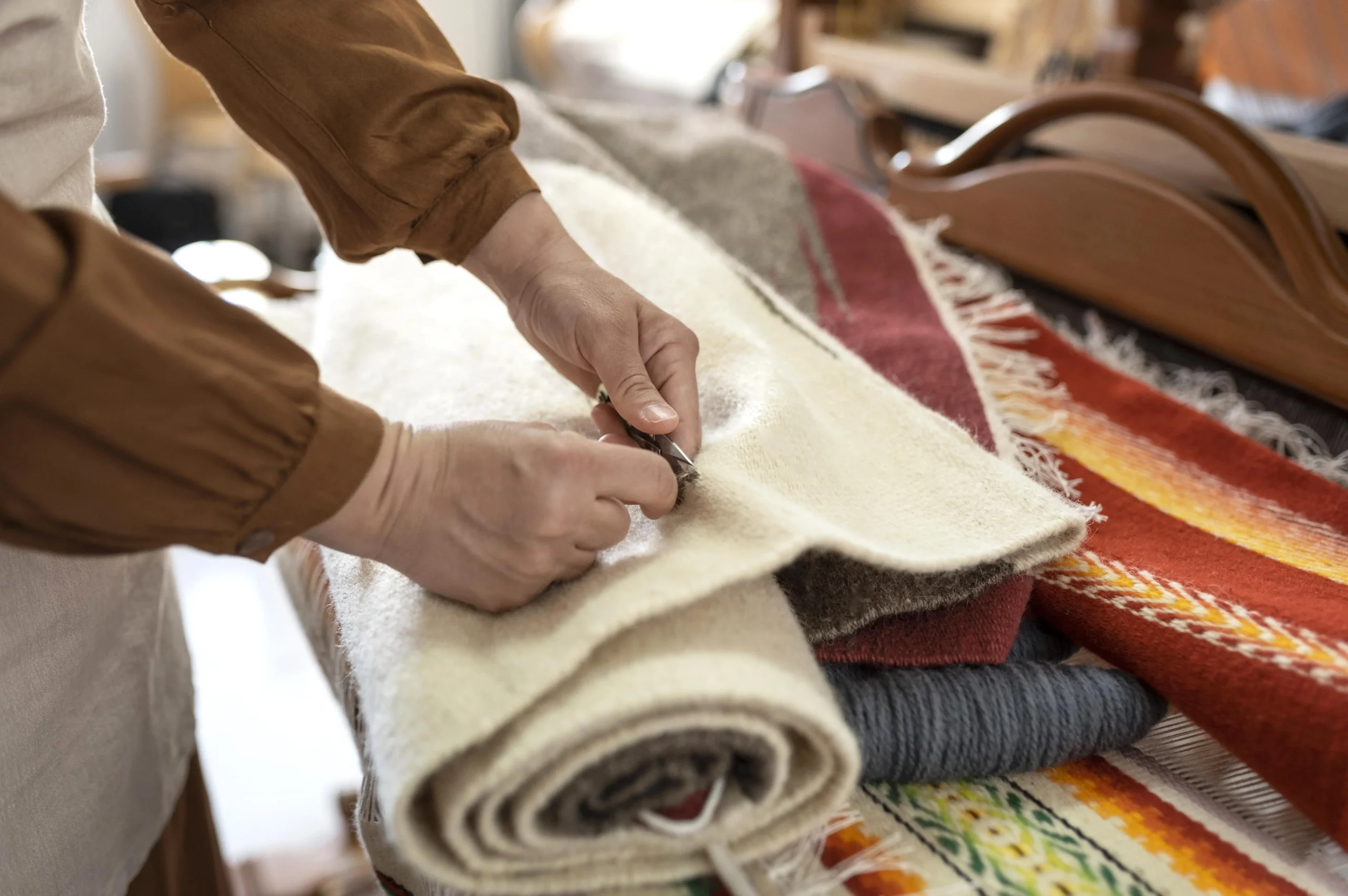

Handloom vs. Khadi: Fabric of Tradition and Sustainability
In the world of textiles, two terms often stand out for their rich heritage and sustainable production methods: Handloom and Khadi. These fabrics not only embody tradition but also carry a profound impact on the environment and local communities. As we delve into the nuances of Handloom vs. Khadi, let’s explore the key differences, production processes, and the journey toward sustainability.
Handloom Fabrics: Preserving Ancient Craftsmanship
Handloom fabrics are woven by hand, using traditional methods passed down through generations. The process involves manually interlacing yarns to create intricate patterns and designs. This method not only preserves ancient craftsmanship but also provides employment opportunities for skilled artisans. Each handloom fabric tells a story of cultural heritage and individual artistry, making it a cherished possession for many.
Khadi Fabric: Gandhi’s Symbol of Self-Reliance
Khadi holds a special place in India’s history, championed by Mahatma Gandhi as a symbol of self-reliance and independence. Unlike handloom fabrics, Khadi is hand-spun and hand-woven, using natural fibers such as cotton, silk, or wool. The production process emphasizes simplicity and sustainability, reflecting Gandhi’s vision of empowering rural communities through cottage industries.
Yarn and Production Process
Both Handloom and Khadi fabrics begin with high-quality yarn, sourced from natural fibers or organic materials. However, the production processes diverge in their approach. Handloom weaving involves intricate patterns and designs, often requiring skilled artisans to operate traditional wooden looms. On the other hand, Khadi production focuses on simplicity, with an emphasis on hand-spinning yarn using a charkha (spinning wheel) and weaving on basic handlooms.
Availability: From Village Workshops to Global Markets
Handloom fabrics are crafted in various regions across the world, each contributing its unique cultural identity to the textile landscape. From vibrant ikat patterns in India to delicate tweeds in Scotland, handloom textiles offer a diverse range of options for discerning consumers. Khadi, with its association with Indian independence and sustainability, has gained popularity not only in India but also in global markets, symbolizing ethical fashion and conscious consumerism.
Sustainable Production
One of the defining characteristics of both Handloom and Khadi is their commitment to sustainable production practices. Handloom weaving minimizes the use of electricity and machinery, reducing carbon footprint and energy consumption. Khadi production, with its emphasis on natural fibers and manual techniques, promotes eco-friendly alternatives to mass-produced textiles, fostering a deeper connection between consumers and the environment.
Empowering Artisans
At the heart of Handloom and Khadi is the empowerment of artisans and weavers, many of whom come from rural communities with limited economic opportunities. By supporting these traditional crafts, consumers play a vital role in preserving cultural heritage and promoting socio-economic development. Organizations like Woodloom are dedicated to creating sustainable livelihoods for artisans, ensuring fair wages and working conditions while preserving the integrity of handcrafted textiles.
Unique and Timeless Trends
Handloom and Khadi fabrics possess a timeless allure that transcends trends and fashion cycles. Each piece carries the mark of its maker, imbued with the beauty of imperfection and human touch. Whether it’s a handwoven saree or a Khadi kurta, these textiles exude elegance and sophistication, making them enduring classics in a world of fast fashion and fleeting trends.
Comfort and Versatility
Beyond their aesthetic appeal, Handloom and Khadi fabrics offer unparalleled comfort and versatility. The breathable nature of natural fibers makes them ideal for all seasons, providing comfort and ease of movement. Whether it’s a casual day out or a formal event, Handloom sarees, Khadi dresses, and scarves add a touch of elegance and sophistication to any ensemble.
Key Differences: Tradition, Technique, and Philosophy
While Handloom and Khadi share similarities in their commitment to tradition and sustainability, they differ in their production techniques, cultural significance, and philosophy. Handloom weaving emphasizes intricate designs and skilled craftsmanship, reflecting the cultural heritage of diverse communities. Khadi, on the other hand, embodies simplicity and self-reliance, rooted in Gandhi’s vision of a sustainable and equitable society.
Conclusion
In conclusion, Handloom and Khadi represent more than just fabrics; they are symbols of tradition, sustainability, and empowerment. By choosing these textiles, consumers not only embrace timeless elegance but also support the livelihoods of artisans and contribute to a more sustainable future. Moreover, with the convenience of purchasing handloom products online, individuals can effortlessly access and appreciate the craftsmanship of these traditional textiles. As we celebrate the rich legacy of Handloom and Khadi, let us continue to cherish and preserve these invaluable treasures of our cultural heritage.
